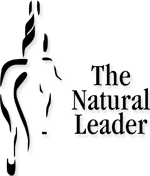 It should have been easy. The idea was simple enough, get Gabe used to stuff happening around him.
It should have been easy. The idea was simple enough, get Gabe used to stuff happening around him.
I have learned how complicated simple can be. Now well past ninety days, we continue one step at a time working through the Tarp Challenge. Gabe remains hesitant about the blue tarp, but what has changed it is that it is no longer about getting him used to the tarp. It is now about how I offer the information and allow him the opportunity to interpret my intention. To a horse everything means something and nothing, means nothing. We are getting closer to nothing.
Horsemanship is a journey and each day with Gabe, each session with people I learn more about how I present myself. Through recent programs leadership presence has been the focus of conversation. We begin each session asking what would each individual like to get out of their day, defining a goal for themselves. We hear a lot about what they would like to see in their staff, changes in how their communication is received or thoughts that relate to getting others to perform their best, for some it is a challenge to get them to see the role they play in that outcome.
It takes seconds for a horse to figure out a person’s “I statement”. However, having the human articulate it plainly and clearly is another story. When they find it, it is gold for us in the arena.
To be honest it really doesn’t matter whom I pair with who or what activities we have planned for a sessions. The horses simply do what they do and the people will say the the most amazing things. I so love to hear it when someone simply states what they need to do differently as a result of the interactions with the horse. What was challenging for them to articulate in the classroom rolls off their tongue in the arena.
I am so proud of my horses. They do not just tolerate another human on the end of the lead line, but they share with them something that becomes so profound. I know that person is leaving with a whole new perspective on what leadership presence means to them.
Just as it is no longer about getting Gabe used to the commotion going on around him, but rather about how “I can support and help Gabe understand that he can trust me through whatever may be happening around us.” I still want Gabe to accept a blue tarp, but it is what I am willing to do in order for him to get there that makes the difference.
What’s in it for me? Immense satisfaction on what I can accomplish if I set my heart and mind to something.



 From our place the view of the mountains is spectacular, some days it feels like you could touch them.
From our place the view of the mountains is spectacular, some days it feels like you could touch them. 
